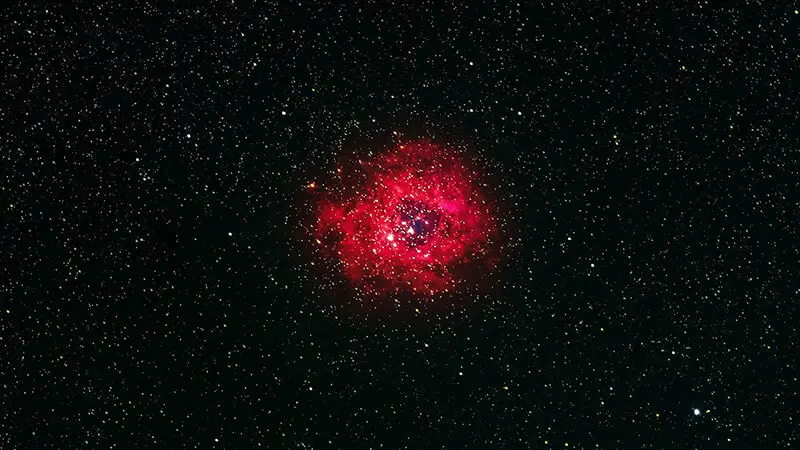A telescope is an instrument used to form magnified images of distant objects. It is one of the most important investigative tools in astronomy, providing a means of collecting and analyzing light from celestial objects, even those in the far reaches of the universe. But what are the three major functions of a telescope?
The primary purpose of an astronomical telescope is to make objects from outer space appear as bright, contrasty, and large as possible. This purpose defines its three significant functions: light gathering, magnification, and resolution.
In this article, you get
A deep dive into how telescopes gather light
A description of magnification and how it works in a telescope
A close look at what is meant by a telescope’s resolution
By the end of this article, you’ll have a solid understanding of the three primary functions of a telescope and much more!
Let’s dive right in.
Recommended For You
What are the Three Major Functions of a Telescope?
The three central functions of a telescope are:
- Light Gathering: An essential function of a telescope is to collect faint light from an astronomical source. Most objects of interest to astronomers are incredibly faint, and the more light a telescope can gather, the better astronomers can study these objects.
- Magnification: The second major function of a telescope is to magnify the image of the object. Magnification allows astronomers to see things too small to be seen with the naked eye, like the planet Neptune..
- Resolution: The third significant function of a telescope is its ability to distinguish between two closely spaced objects. The higher the resolution, the more precise the image.
Function 1: Light Collection

What is the Main Function of a Telescope?
The first critical function of a telescope is to collect light from astronomical sources. The more light a telescope can gather, the better it can study faint objects of interest to astronomers.
Telescopes can collect light in a variety of ways.
Some telescopes use mirrors to gather and focus light, while others use lenses.
Telescopes with larger apertures can provide clearer images of faint objects.
Function 2: Magnification

A telescope’s second primary function is magnification. Magnification refers to making an object appear larger than it is. A combination of lenses or mirrors within the telescope bend and focus light onto a small point. You can then use an eyepiece to view this magnified image.
The amount of magnification a telescope can provide is the ratio of the telescope’s focal length to the focal length of its eyepiece. The greater the ratio, the greater the magnification.
However, it is essential to note that while magnification can bring distant objects closer, it also reduces the amount of light entering the telescope, making the image dimmer.
Additionally, there are limits to the amount of useful magnification from a telescope. Factors such as the quality of the telescope’s optics and atmospheric disturbances determine useful magnification.
Generally, the maximum useful magnification for a telescope is approximately 50 times its aperture in inches (two times its aperture in millimeters).
Function 3: Resolution

Resolution in a telescope refers to its ability to distinguish between two closely spaced objects. The higher the resolution, the more precise the image.
The size of the telescope’s aperture and the wavelength of the observed light determine the resolution.
The aperture of a telescope is the diameter of its primary lens or mirror. The larger the aperture, the more light the telescope can gather and the higher its resolution. However, larger apertures also mean larger and more expensive telescopes.
The wavelength of light also affects a telescope’s resolution. Shorter wavelengths, UV and blue, provide higher resolution than longer wavelengths, red and IR.
Telescopes on the ground are limited in resolution by atmospheric turbulence, which causes the image to blur. This turbulence is why many observatories are located at high altitudes or in space, with far less atmospheric interference.
In addition to aperture and wavelength, the quality of a telescope’s optics and its ability to track objects accurately affect its resolution. High-quality optics with minimal aberrations and precise tracking mechanisms are essential for achieving the highest possible resolution.
Resolution is a vital function of a telescope. It allows astronomers to study the universe beyond what the naked eye can see.
How Telescopes Work
Telescopes are tools that astronomers use to see faraway objects. They work by collecting light from the night sky and focusing it into an image.
Most objects of interest to astronomers are incredibly faint, and the more light we can collect, the better we can study such objects.
Glossary of terms
Telescopes are fascinating instruments that allow us to observe the universe beyond our naked eyes. However, understanding the terminology associated with telescopes can be overwhelming for beginners.
Here are some key terms:
- Refractor: A telescope that uses lenses to bend light into focus.
- Reflector: A telescope that uses mirrors to reflect light into focus.
- Cassegrain focus: A type of telescope design that uses a secondary mirror to extend the telescope’s focal length.
- Nasmyth focus: A type of telescope design that separates light from the telescope’s primary optics for use with instruments such as cameras or spectrographs.
- Finderscope: A small telescope that mounts to the main telescope for sighting objects in the sky.
Understanding these terms will help you better understand the functions of a telescope and the different types of telescopes available. For example, knowing the difference between a refractor and a reflector can help you choose the right telescope. And understanding the different focus designs can help you decide which telescope will work best with the instruments you plan to use.
While this glossary is not exhaustive, it should provide a beginning foundation. With this knowledge, you can confidently begin your journey into the fascinating world of telescopes.
Frequently Asked Questions
How does a telescope gather light?
A telescope gathers light through its primary lens or mirror to capture as much light as possible. This light then goes to a secondary mirror or eyepiece, which magnifies the image for viewing. The larger the telescope’s aperture, the more light it can gather.
What is the difference between resolving and magnifying power?
Resolving power refers to a telescope’s ability to distinguish fine detail while magnifying power refers to how much larger an object appears. Resolving power is determined by the size of the telescope’s aperture and the wavelength of the observed light. Magnifying power is a function of the eyepiece used with the telescope.
Can a telescope be used for both astronomy and terrestrial viewing?
Yes, many telescopes can be used for both astronomical and terrestrial viewing. However, the type of telescope used may differ depending on the intended use. Refracting telescopes are often used for terrestrial viewing while reflecting telescopes are more commonly used for astronomy. Additionally, telescopes used for terrestrial viewing may require additional accessories, such as a diagonal mirror, to provide a comfortable viewing angle.
Summary
Thank you for reading my article “What are the three major functions of a telescope?”
Telescopes play a vital role in our understanding of the universe. From observing distant galaxies to exploring our solar system, they have expanded our knowledge and inspired us to reach for the stars.
By understanding the three primary functions of a telescope – gathering light, magnifying distant objects, and resolving fine detail – we can appreciate the incredible technology behind these powerful instruments.
Whether you’re a professional astronomer or a casual stargazer, the wonder and awe of the universe are accessible to all through telescopes.
So explore the night sky, and never stop reaching for the stars.



